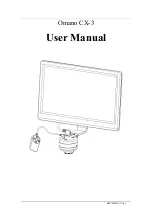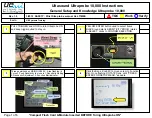
Glossary: Frequently Used Terms
R&S
®
ZVA
103
Getting Started 1145.1090.62 ─ 13
Reverse:
A measurement on a two-port DUT is said to be in reverse direction if the
source signal (stimulus) is applied to port 2 of the DUT.
S
Setup:
A setup comprises a set of diagram areas with all displayed information that
can be stored to a NWA setup file (
*.zvx
). Each setup is displayed in an independent
window.
Source match error:
Measurement error caused by a mismatch of the analyzer's
source port causing part of the signal reflected off the DUT to be reflected again off the
source port so that it is not measured there. The source match error can be corrected
by means of a full one-port calibration or a two-port calibration (except normalization).
Source power calibration:
Correction method that ensures accurate power levels of
the generated wave at an arbitrary reference plane in the measurement path. The
source power calibration eliminates frequency response errors in the signal path
between the source and the reference plane.
Stimulus value:
Value of the sweep variable (frequency/power/time/point number)
where a measurement is taken. Also termed sweep point.
Sweep:
Series of consecutive measurements taken at a specified sequence of stimu-
lus values = series of consecutive measurement points.
Sweep point:
Value of the sweep variable (stimulus value: frequency/power/time)
where a measurement is taken.
Sweep range:
Continuous range of the sweep variable (frequency/power/time) con-
taining the sweep points where the analyzer takes measurements. In a Segmented
Frequency sweep the sweep range can be composed of several parameter ranges or
single points.
Sweep segment:
Continuous frequency range or single frequency point where the
analyzer measures at specified instrument settings (generator power, IF bandwidth
etc.). In the Segmented Frequency sweep type the entire sweep range can be com-
posed of several sweep segments.
T
TNA:
A calibration type using a Through, a symmetric Network and an Attenuation
standard. The properties of the Network and the Attenuation don't have to be known
exactly. Like TRL and TRM, TNA is especially useful for DUTs in planar line technol-
ogy.
TOM:
A calibration type using three fully known standards (Through, Open, Match),
recommended for 2-port measurements on coaxial systems.




































